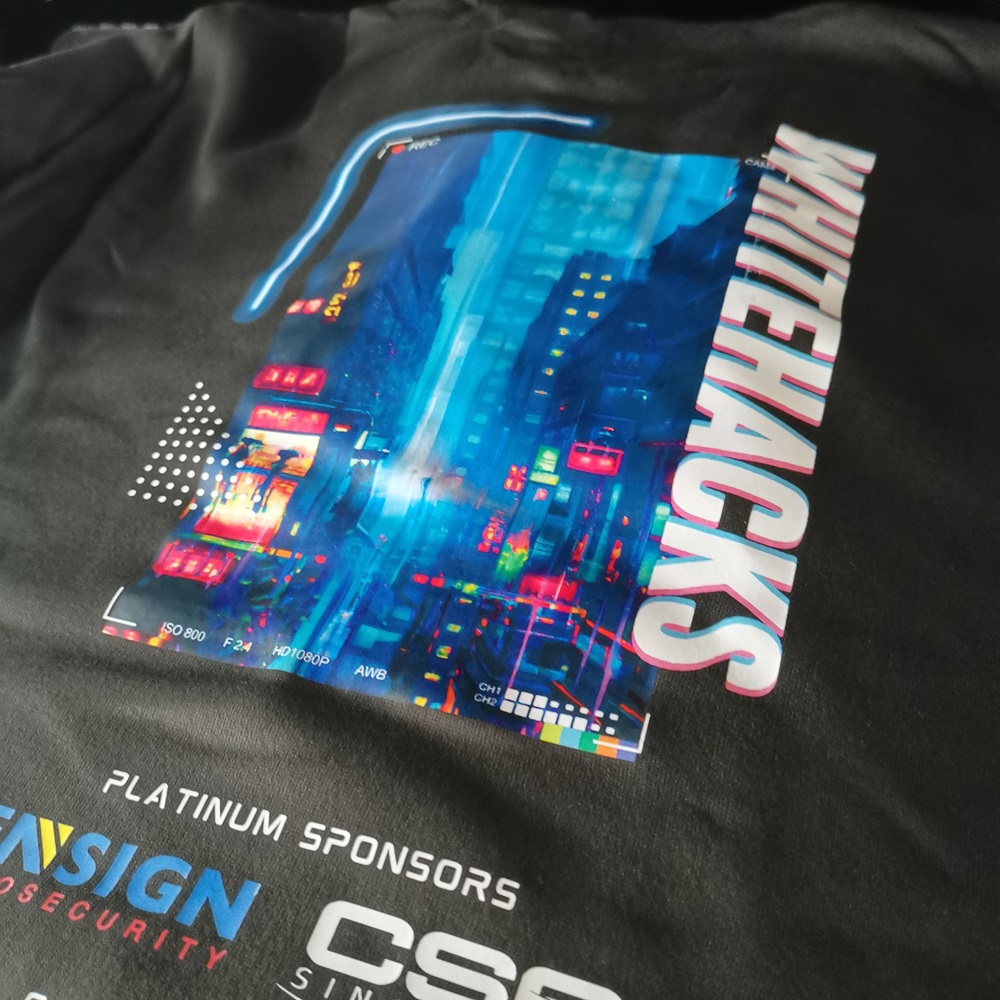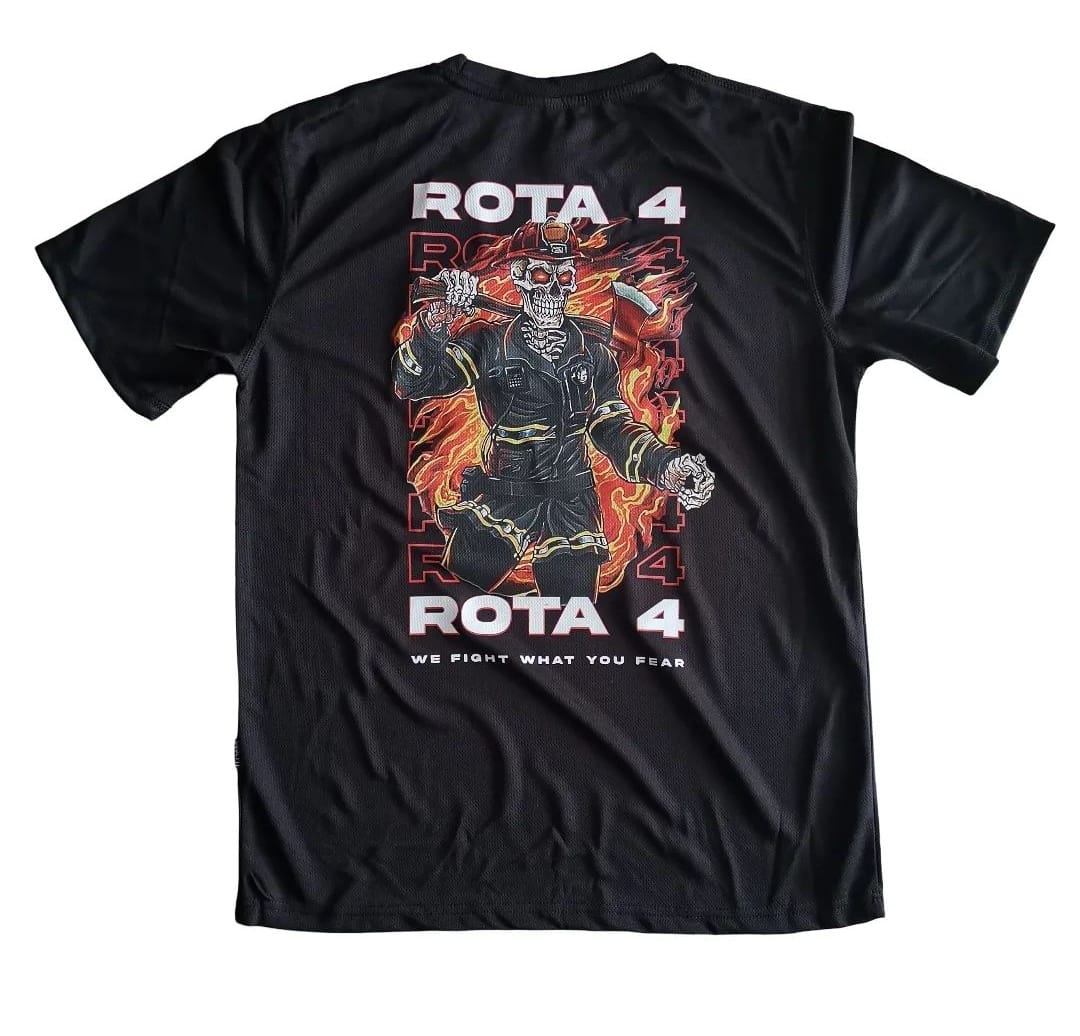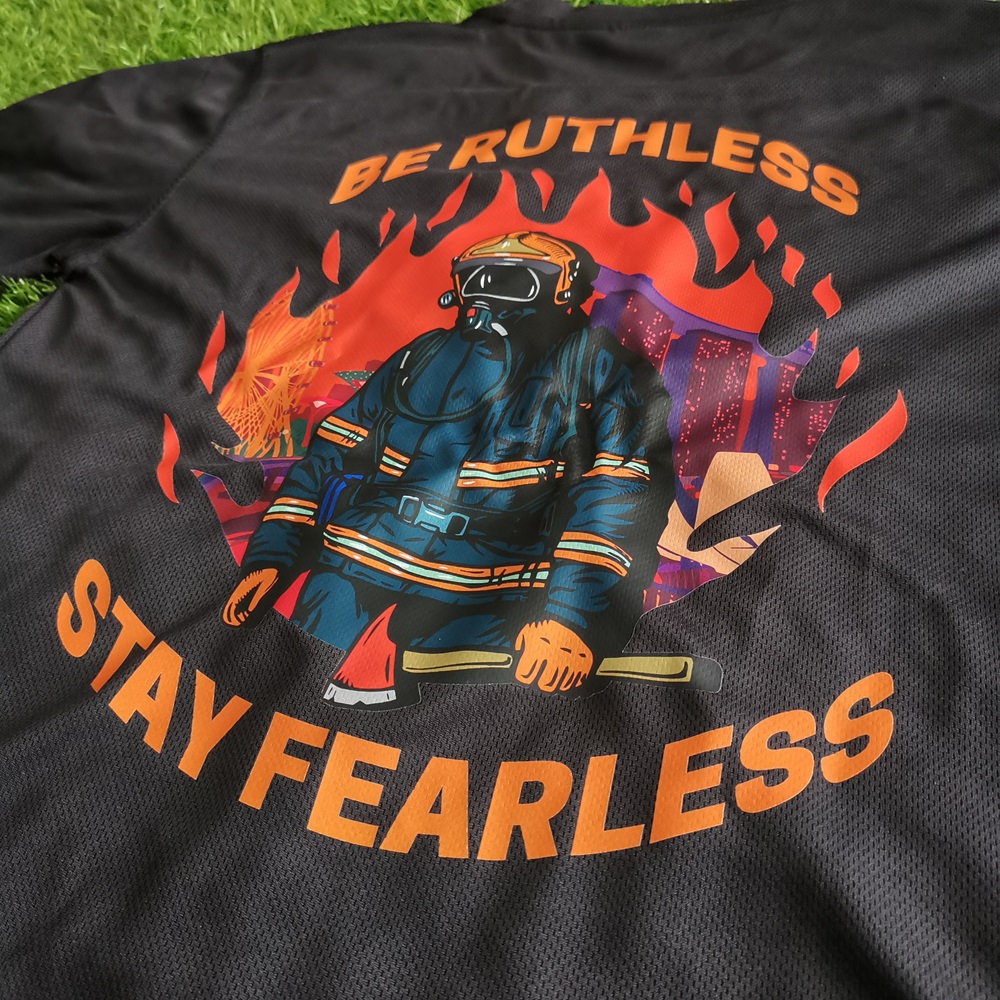Are you looking for Direct-to-Film DTF Printing and unsure what it actually means? Yes, you have come to the right article and we will keep you well informed about this new printing method. TJG Print has been in this industry for T-shirt printing in Singapore for more than 10 years and we will share our experience and tips. Hence, you will know which type of print method is best achieved with your custom design. With the additional understanding of why T-shirt printing is still essential, you know how best to fit custom T-shirt printing designs with your desired intentions.



What is Direct-To-Film DTF Printing?
Looking to create a custom T-shirt that boasts vivid and vibrant results? You have likely come across Silkscreen Printing and Heat Transfer methods. Direct-To-Film (DTF) Printing joins the league where designs are printed onto special film using water-based pigment ink, allowing it to handle intricate and small designs well.
In DTF Printing, designs are first created using software and then printed on DTF film before being directly transferred onto your apparel. Unlike SilkScreen Printing, DTF does not use a stencil to create images. Instead, it shares similarities with Digital Heat Transfer printing method during the image transfer process.
DTF printing does not involve the tedious and long labour hours of weeding and peeling of the transfer films. The smooth and quick process of this print has become an evolution in the printing industry. Like how handphone use to be so huge in the beginning and it gets smaller over the years. DTF Printing has become a new printing technology and has nearly put digital heat transfer print out of phase.
Simply put, DTF offers full-colour transfer, enabling you to print graphic images onto a T-shirt made of Cotton or Dri-Fit polyester with ease.
DTF printing, like any other methods, involves a multi-step process to customise your t-shirt.
How is Direct-To-Film DTF Printing Done?
Step 1 : Print onto DTF Films
Step 2 : Powdering
Step 3 : Curing and Melting of powder
Step 4 : Transfer of DTF Films to apparel by heat press
Step 5 : Peel off DTF Films and VIOLA!
What are the Pros and Cons of DTF Printing
Pros
1. Great for intricate designs
2. Able to print out gradient effect designs
3. Much more durable compared to digital heat transfer prints
4. Able to print on various types of gift items and apparels of different material. (Versatile and easy to print on)
5. Cost effective for bulk orders
6. Faster turnaround time due to less complex setup
7. No more peeling and weeding process. Hence, save time and labour hours.
Cons
1. Design may be hard and less breathable (It is a film transferred to the apparel)
2. Ironing at high temperature may cause discolouration
3. Less durable compared to print methods such as Silkscreen printing or Embroidery.
4. Requires high resolution image file (Client’s without design knowledge may find it difficult to come up with a design)
Suitability and Durability of DTF Printing
DTF printing can print on a wide range of fabric types including cotton, polyester, cotton polyester blends and more. DTF Printing offers good adhesion and durability on different materials. The films are more elastic and durable which prevents cracking and peeling of the prints. It can withstand multiple washes (100 washes or more) without significant fading or cracking. However, the durability of DTF printing can also vary depending on the fabric’s texture and composition. With more understanding on which type of T-shirt printing method last the longest, you can make a comparison between the different print methods and make the best informed choice to your designs and options.
For better wash care tips,
– Wash your t-shirt inside out
– Do not iron over print
– Using high temperature water can cause your printed shirts to peel or crack
– Do not bleach as they contain harmful chemicals that may react with vinyl
More Frequently-Asked-Questions (FAQ) can be found here.
When to use DTF Printing?
DTF Printing are generally used when the designs are complex, multi-coloured and/or have gradient effects.
When the designs are complex and small, DTF print are able to achieve much clearer prints as compared to other printing methods. If the designs are multi-coloured, we do recommend printing them in DTF print as they will be more economically friendly and cheaper compared to doing by Silkscreen printing. Also, gradient effect prints cannot be achieve by silkscreen printing. Thus, DTF Print is once of the few print method for this.
If you also take a look at soccer jerseys printing or badminton T-shirt jersey printing as an example, most of the prints are done up by DTF Printing to include coloured company/brand logos or wordings. DTF Printing are affordable and the lead time are much quicker.
What is required for DTF Printing?
We all love our prints to be crisp and clear. That said, it is vital that the designs provided for printing have to be in high resolution image files. A good resolution will be to have the designs of at least 300dpi. When printed, they will not be pixelated or blurry.
We understand not all clients have design background knowledge, as such we have compiled 4 T-Shirt design templates for creating your design. One good design site will be Canva where you will be able to export designs in high resolution format.
Direct to Film Vs Direct to Garment
On another note, you may have heard of Direct-To-Garment (DTG) printing. While they may share similar names, they are different.
DTF printing prints on special films before the film is being applied to your t-shirt, the process involves additional steps of applying DTF powder, to ensure the image and fabric bond well. DTG printing directly applies water-based ink onto the fabric of the garment. The ink is absorbed into the fibres of fabric, creating a soft and seamless print.
DTF Printing can be done on most gift items and apparels. DTG Print can only be printed on 100% cotton materials. Hence, the limitations of DTG Print makes it a less viable choice of print method. However, DTG Printing orders can be accepted with no minimum quantity orders. It is capable to print them 1-2 pieces for any occasions. DTG is cost effective for smaller orders and on-demand printing due to its ability to handle complex designs without the need for stencil or films.
DTF Printing are usually done in bulk of minimum 10 pieces. It can be cost effective for bulk orders due to lower ink costs and its ability to produce multiple colours and prints simultaneously. The process, however, involves more setup time for image transfer.
Direct to Film Vs Silkscreen Printing
While both are popular print methods, they have their key differences, advantages and disadvantages.
Silkscreen printing are usually done in 1-3 printing colours. They are very cost effective when it comes to large quantity.
DTF Printing are more advised to be printed when the designs are in multi-coloured or with gradient effect. As such, DTF printing is more superior over silkscreen printing as DTF printing is able to achieve gradient prints. If designs are multi-coloured, the cost of printing in DTF is also cheaper compared to silkscreen printing where the cost is based on the number of printing colours.
For colour matching, both DTF printing and silkscreen printing are capable to matching close to pantone colour. Silkscreen is usually easier to achieve matching pantone colour while DTF print require lots of trial and error attempt when handling the machine and ink.
When it comes to intricate or very tiny details, DTF print is on the upper hand. Silkscreen printing normally able to print clearly up to 3-4mm height wordings. DTF Print can achieve better clarity even with 2mm height wordings. Otherwise, to be safe, we can add bleeding line around the wordings or designs for DTF prints. Bleeding lines are a perimeter of background around the wordings or design. Bleeding lines are usually match close to the apparel’s colour so that it will be less obvious.
Durability wise, silkscreen printing is the hands down champion as they can last thousand over washes. DTF Printing are films transferred onto the apparel or garment and their durability can be based on lots of factor. Usually it last 100 over washes.
Direct to Film Vs Embroidery
I am pretty sure embroidery is a very common print method that you have heard of. It has been around for 100 over years and till to date, it will still remain as one of the top choice of printing method
T-Shirt embroidery are known to make your design “come to life”. Their pop up effect and textured prints make it more professional looking. Hence, corporate companies love to go with this print method. DTF prints are like a film transferred onto the apparel and they do not offer any textured or pop up effect.
Embroidery can be a little tricky at times because this print method does not offer crystal clear clarity appearance. Embroidery are not able to achieve intricate or small designs or wordings. DTF Print is more advantageous in this case.
If time is of an essence, usually DTF prints are much quicker to meet express t-shirt printing deadlines or urgent job orders. Embroidery are much more time consuming.
When it comes to variation, embroidery offers different kinds of print variation such as Custom Embroidery Patches (Velcro Embroidery Patches, Iron On Patches, or Name Tag Embroidery Patches). Embroidery also can achieve niche gift products such as custom embroidery keychains which is a very popular gift for any occasions.
Conclusion
As a new form of printing technology, DTF printing have made a revolutionary change to the printing industry. The advantages of DTF Print has made it one of the most popular choice of printing method. Still, traditional print methods are not obsolete and they are still very important in achieving many different prints.
When choosing to do T-shirt printing, consider order size, design complexity, apparel type and budget. The type of designs may affect the type of printing method which may not be satisfactory to your expectations. All print methods have their strength and suitability for different purposes and needs. When in doubt, reach out to us to find out more.
